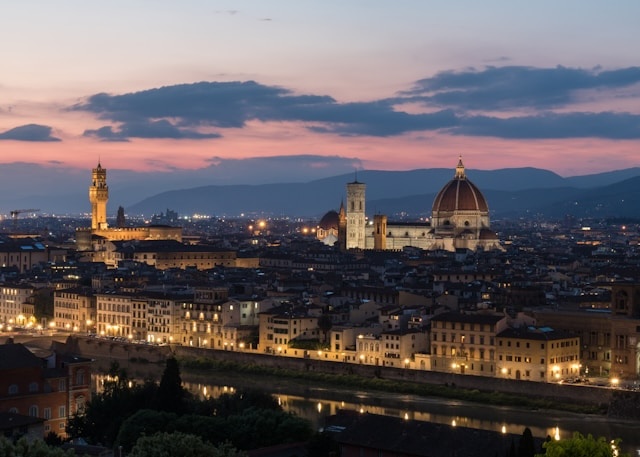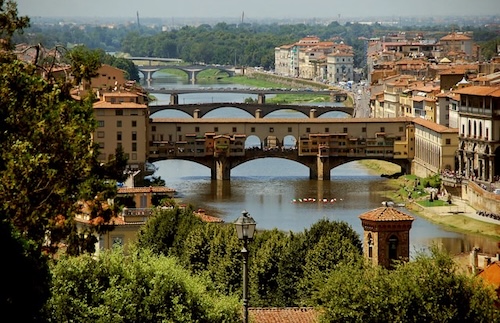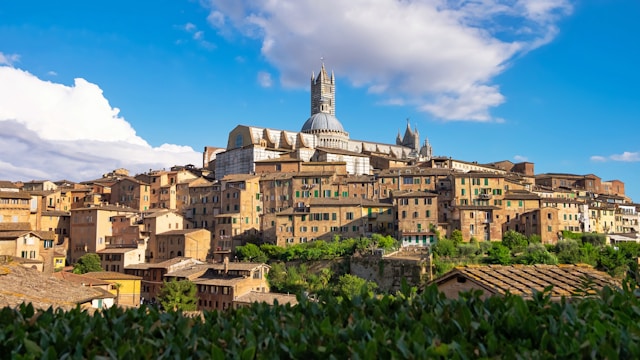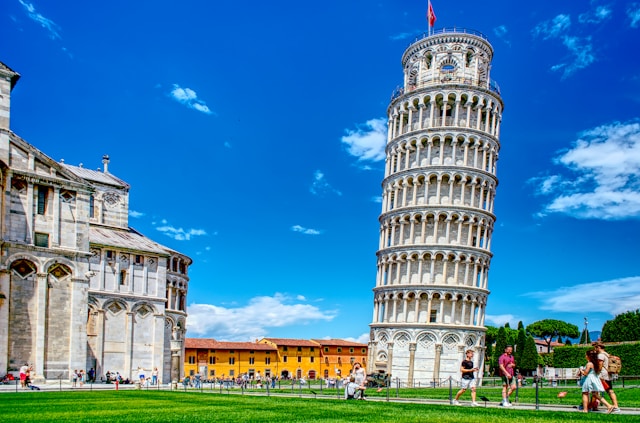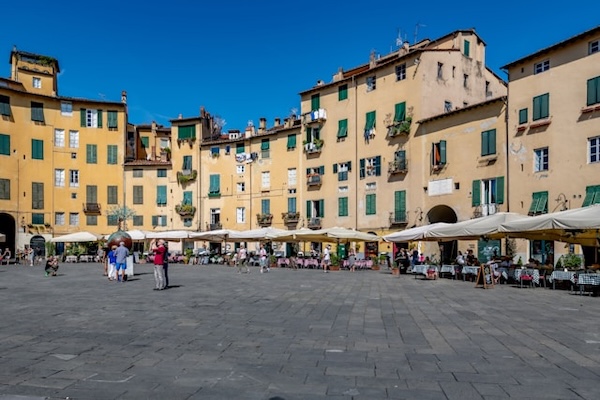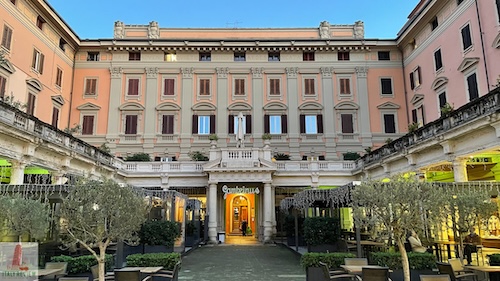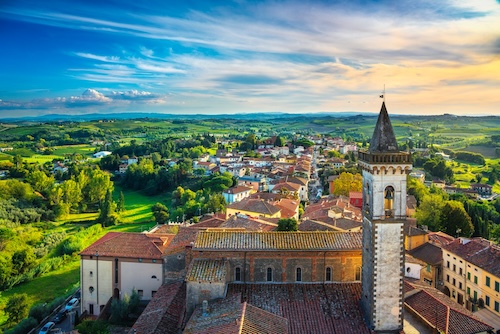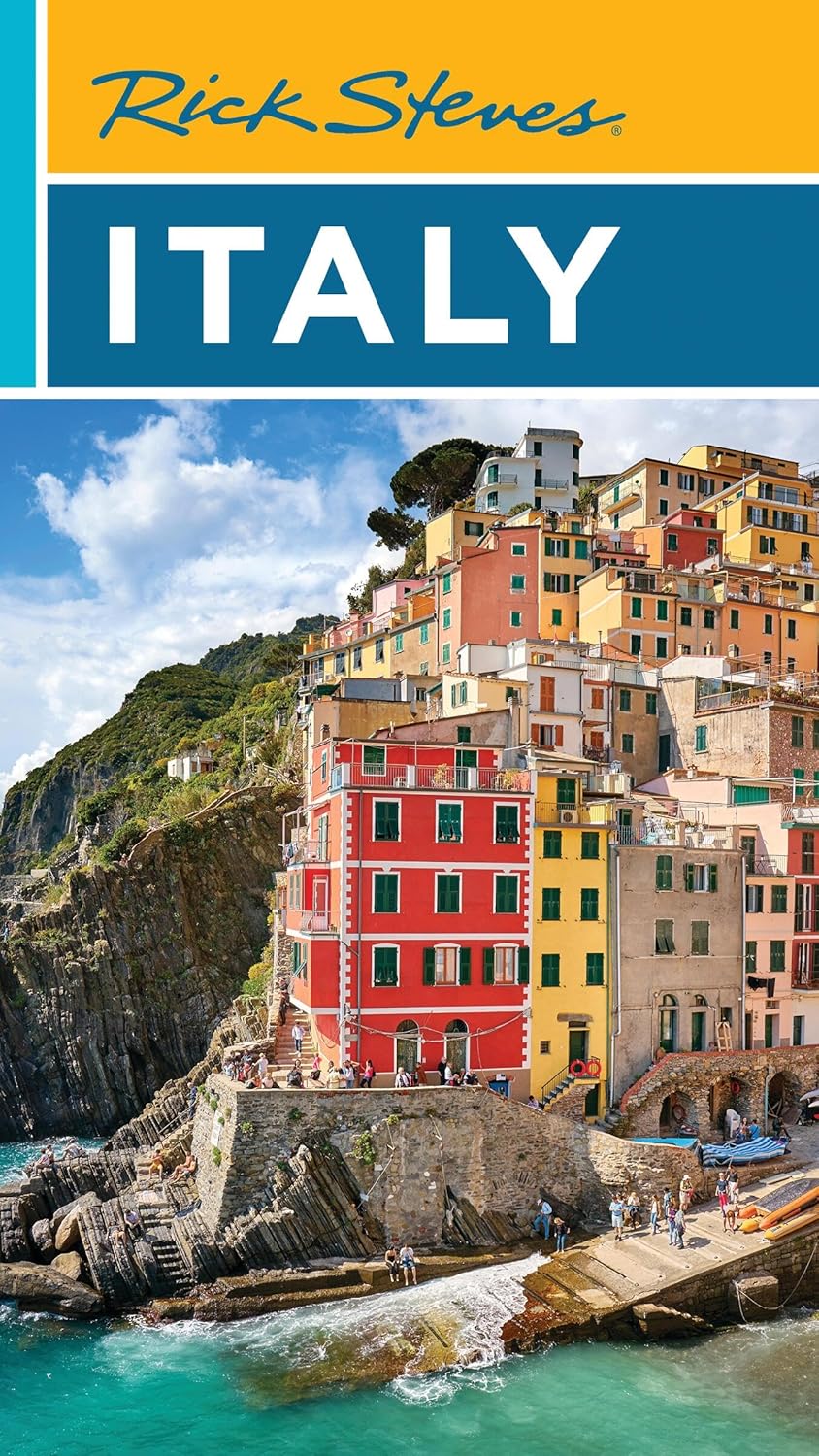What To Do In Tuscany, Italy
If you're wondering what to do in Tuscany in Italy, you've come to the right place!
When you think about Italy, what comes to mind? Rolling hills dotted with cypress trees, world-class art, incredible wine, and Renaissance architecture that takes your breath away? If so, you're already dreaming of Tuscany.
This enchanting region in central Italy offers an unparalleled blend of cultural treasures, natural beauty, and authentic Italian experiences that will leave you planning your next visit before you've even left. Whether you're wondering what to do in Tuscany or simply seeking inspiration for your Italian adventure, this comprehensive guide will help you discover the magic that has captivated travelers for centuries.
Tuscany isn't just a destination; it's a journey through time, art, and culture. From the Renaissance masterpieces of Florence to the medieval charm of Siena, from the iconic Leaning Tower of Pisa to the thermal springs of Montecatini, this region offers something extraordinary for every type of traveler.
The beauty of Tuscany lies not only in its famous landmarks but also in its hidden gems – small villages perched on hilltops, family-run wineries, and local markets where you can taste the authentic flavors of Italy.
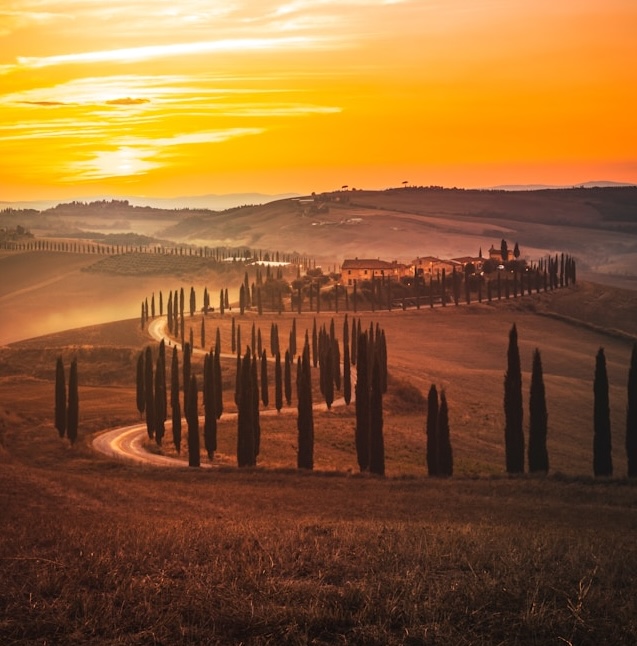 Tuscany countryside
Tuscany countryside
What To Do In Tuscany
Florence, the crown jewel of Tuscany and the birthplace of the Renaissance, should be at the top of your list when exploring this magnificent region. Florence in Italy serves as the perfect starting point for your Tuscan adventure, offering world-renowned museums, stunning architecture, and a vibrant cultural scene that pulses through its historic streets.
Also called Firenze in Italian, the city is easily accessible by train from major Italian cities, with high-speed connections from Rome taking just 1.5 hours and from Milan in about 2 hours. The Santa Maria Novella train station places you right in the heart of the city, within walking distance of most major attractions.
The Uffizi Gallery stands as Florence's most famous attraction, housing the world's finest collection of Renaissance art. Here, you'll come face to face with masterpieces by Botticelli, Leonardo da Vinci, Michelangelo, and Raphael.
The gallery's corridors tell the story of artistic evolution, from medieval religious paintings to the revolutionary techniques that defined the Renaissance. To make the most of your visit, book tickets in advance online, as the museum often sells out, especially during peak tourist seasons from April to October.
No visit to Florence is complete without climbing to the top of the Duomo, officially known as the Cathedral of Santa Maria del Fiore. The iconic red-tiled dome, designed by Brunelleschi, dominates the city's skyline and offers breathtaking panoramic views of Florence and the surrounding Tuscan hills.
The climb involves 463 steps, but the reward is worth every step. Inside the cathedral, you'll marvel at the stunning frescoes and intricate marble work that showcase the artistic mastery of the Renaissance period.
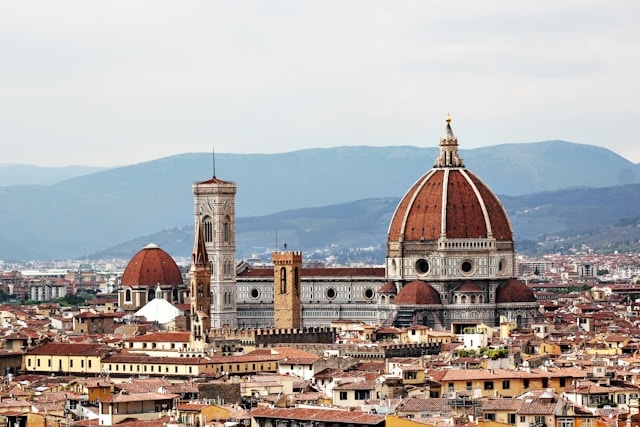 The Duomo
The DuomoThe Ponte Vecchio, Florence's oldest bridge, offers a unique shopping experience unlike anywhere else in the world. This medieval stone bridge, spanning the Arno River, is lined with jewelry shops that have been operating for centuries.
As you stroll across, you'll discover that this isn't just a bridge but a living piece of history where goldsmiths and jewelers continue traditions passed down through generations. The bridge also provides excellent photo opportunities, especially at sunset when the golden light reflects off the Arno River.
Art enthusiasts will find themselves drawn to the Accademia Gallery, home to Michelangelo's original David statue. This 17-foot marble masterpiece represents the pinnacle of Renaissance sculpture and is even more impressive in person than in photographs.
The gallery also houses other works by Michelangelo and provides insight into the artistic techniques and cultural context of the Renaissance period. Plan to spend at least two hours here to fully appreciate the collection and the detailed craftsmanship of these timeless works.
Beyond the major attractions, Florence offers countless opportunities to immerse yourself in Italian culture.
- Take a cooking class to learn how to make authentic pasta and traditional Tuscan dishes,
- or join a wine tasting tour to sample the region's famous Chianti wines.
The city's markets, particularly the Mercato Centrale and Sant'Ambrogio Market, provide authentic experiences where you can interact with locals and taste fresh, seasonal ingredients that define Tuscan cuisine.
For more about Florence, visit our detailed 'Florence' page!
Florence Vespa Tour: Tuscan Hills and Italian Cuisine
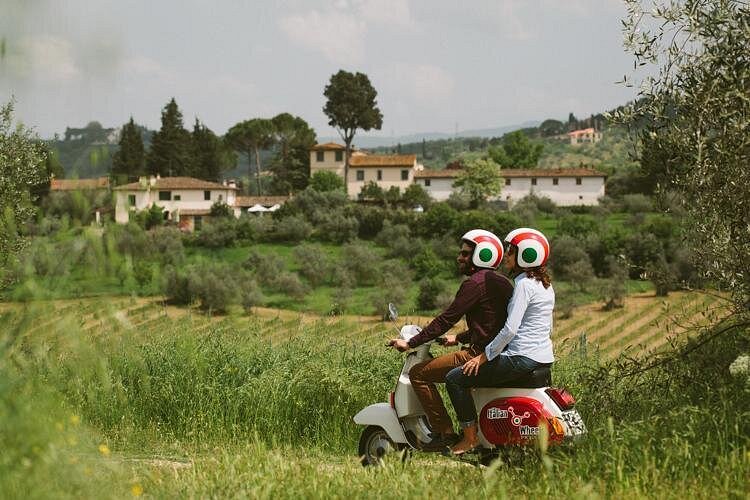 A fun Florence Vespa Tour!
A fun Florence Vespa Tour!Ride your own Vespa through Tuscany on this group tour from Florence. A local guide leads the way up through the scenic hills, where you pass the famous Piazzale Michelangelo and the Church of San Miniato al Monte. Afterward, head back to our country estate for a traditional Italian meal to top off your journey.
- Follow your guide into the Tuscan hills while driving your own Vespa
- See off-the-beaten-path sights such as the Church of San Miniato al Monte
- Enjoy a Tuscan meal at a country estate
- Stay in contact with the guide via a 2-way radio
Read more about - Florence Vespa Tour: Tuscan Hills and Italian Cuisine
Click here or on the banner below for more information and to book with our trusted partner Viator.
This tour is very popular with our readers!
What To Do In Tuscany
Siena, located about 70 kilometers south of Florence, represents medieval Italy at its finest. You can reach this UNESCO World Heritage city by bus from Florence in approximately 1.5 hours, or by train with a connection in Empoli.
The journey itself offers stunning views of the Tuscan countryside, with rolling hills covered in vineyards and olive groves. Siena's historic center, built on three hills, has remained virtually unchanged since the 13th century, making it one of Europe's best-preserved medieval cities.
The heart of Siena is the Piazza del Campo, one of Europe's greatest medieval squares and the site of the famous Palio horse race. This shell-shaped piazza slopes dramatically toward the Palazzo Pubblico and its soaring Torre del Mangia.
Twice each summer, on July 2nd and August 16th, the piazza transforms into a racetrack for the Palio, a bareback horse race that has been held for over 400 years. Even if you can't witness the Palio, the piazza remains a magical place to sit at a café and soak in the medieval atmosphere.
Siena's Gothic cathedral, the Duomo di Siena, showcases some of Italy's most spectacular religious art and architecture. The cathedral's striped marble exterior leads to an interior filled with masterpieces, including works by Donatello, Michelangelo, and Pinturicchio.
The intricate marble floor, revealed only during certain times of the year, tells biblical stories through detailed inlay work. Don't miss the opportunity to climb the cathedral's tower for panoramic views of the city and surrounding countryside.
For more detailed information about Siena, go to our dedicated page!
What To Do In Tuscany
Pisa, famous worldwide for its Leaning Tower, offers much more than this iconic architectural wonder. Located about 85 kilometers west of Florence, Pisa is easily accessible by train in just one hour.
The city served as a powerful maritime republic during the Middle Ages, and its rich history is evident throughout its historic center. The Leaning Tower, part of the stunning Piazza dei Miracoli (Square of Miracles), attracts millions of visitors annually, but the entire complex deserves your attention.
The Piazza dei Miracoli contains four remarkable buildings: the Cathedral, the Baptistry, the Leaning Tower (which serves as the cathedral's bell tower), and the Camposanto cemetery. This UNESCO World Heritage site represents one of the finest examples of Romanesque architecture in Italy.
The cathedral's bronze doors, the baptistry's perfect acoustics, and the tower's famous tilt create an unforgettable ensemble. You can climb the Leaning Tower, but tickets must be purchased in advance and climbing times are strictly regulated to preserve the structure.
Beyond the famous tower, Pisa offers charming neighborhoods to explore along the Arno River. The Borgo Stretto area features narrow medieval streets lined with shops and cafés, while the Lungarni (riverside walkways) provide pleasant strolls with views of historic palaces reflected in the water.
The city's university, one of Italy's oldest, brings youthful energy to the historic streets and ensures a vibrant nightlife scene with numerous bars and restaurants catering to both students and visitors.
Read our dedicated page about what to see in Pisa!
What To Do In Tuscany
Lucca, surrounded by remarkably well-preserved Renaissance walls, offers a more intimate Tuscan experience. Lucca is located 75 kilometers northwest of Florence, this charming city can be reached by train in about 1.5 hours.
The city walls, now converted into a tree-lined park, provide a unique 4-kilometer walking or cycling path that encircles the entire historic center. Renting a bicycle and riding atop these ancient fortifications offers a delightful way to get your bearings and enjoy views of both the city and the surrounding countryside.
Lucca's historic center feels like an open-air museum, with its Roman street layout still intact and medieval towers rising above red-tiled roofs. The Piazza dell'Anfiteatro, built on the site of an ancient Roman amphitheater, creates a perfect oval surrounded by colorful buildings that now house shops and restaurants.
The city's numerous churches, including the Cathedral of San Martino and the Church of San Michele in Foro, showcase different periods of architecture and contain significant artworks that reflect Lucca's prosperous past.
Music lovers will find special meaning in Lucca as the birthplace of composer Giacomo Puccini. His childhood home has been converted into a museum where you can learn about his life and see original manuscripts of famous operas like La Bohème and Tosca.
The city hosts an annual summer music festival that attracts international performers and celebrates Puccini's legacy. Even without the festival, Lucca's acoustically perfect churches often host concerts that showcase both classical and contemporary music.
Read our dedicated page all about Lucca!
What To Do In Tuscany
Montecatini Terme, Italy's most famous spa town, offers a perfect blend of relaxation and Belle Époque elegance. Located 45 kilometers northwest of Florence, this thermal resort town can be reached by train in about 45 minutes.
Montecatini has been attracting visitors seeking wellness and relaxation since Roman times, but it reached its golden age in the early 20th century when European aristocracy made it their preferred destination for "taking the waters."
The thermal establishments in Montecatini offer various treatments using the town's naturally occurring mineral-rich waters, known for their therapeutic properties. The grand spa buildings, including the Tettuccio and Regina establishments, feature stunning Art Nouveau architecture with frescoed ceilings, marble columns, and elegant gardens.
Even if you're not interested in spa treatments, these buildings are worth visiting for their architectural beauty and the glimpse they provide into early 20th-century luxury travel.
From Montecatini, you can take a historic funicular railway to the medieval village of Montecatini Alto, perched on a hilltop 300 meters above the spa town. This charming village offers spectacular views of the Nievole Valley and houses traditional restaurants where you can enjoy authentic Tuscan cuisine in a peaceful, historic setting.
The contrast between the elegant spa town below and the rustic medieval village above perfectly encapsulates the diverse experiences that Tuscany offers.
Read our dedicated page all about Montecatini Terme!
What to do in Tuscany
Vinci, the birthplace of Leonardo da Vinci, provides insight into the early life of history's greatest genius. This small town, 47 kilometers west of Florence, can be reached by bus in about one hour.
The Museo Leonardiano houses an extensive collection of models based on Leonardo's designs, from flying machines to military devices to architectural innovations. The museum brings Leonardo's notebooks to life, showing how his observations of nature led to revolutionary inventions centuries ahead of their time.
The landscape around Vinci, with its olive groves and rolling hills, remains much as it was during Leonardo's childhood in the 15th century. Walking through these hills, you can imagine the young Leonardo observing the flight of birds, the flow of water, and the growth of plants – observations that would later inform his scientific studies and artistic masterpieces.
The town also offers excellent hiking trails that connect to other small villages in the area, providing opportunities to experience the authentic Tuscan countryside.
Read our dedicated page about Vinci.
What To Do In Tuscany
San Gimignano, known as the "Medieval Manhattan" for its distinctive tower skyline, represents one of Tuscany's most photographed destinations. Located 57 kilometers southwest of Florence, this UNESCO World Heritage site can be reached by bus in about 1.5 hours.
During the Middle Ages, wealthy families built these towers as symbols of their power and prosperity. Today, 14 of the original 72 towers remain, creating a unique skyline that transports visitors back to medieval times.
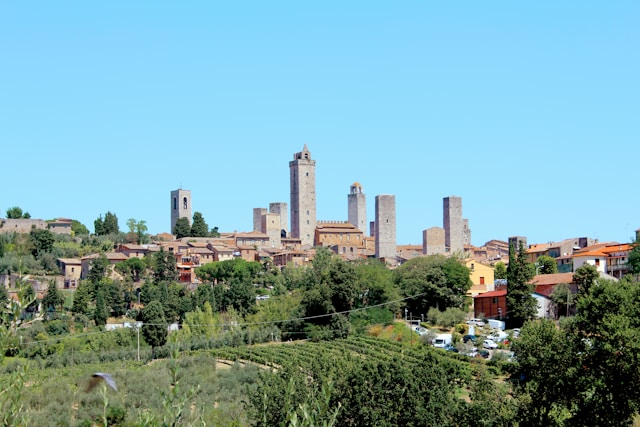 San Gimignano towers
San Gimignano towersThe town's main square, Piazza della Cisterna, surrounded by medieval palaces and towers, serves as the perfect place to begin exploring. The Collegiate Church contains remarkable frescoes depicting biblical scenes, while the Torre Grossa offers panoramic views of the Val d'Elsa countryside.
San Gimignano is also famous for its white wine, Vernaccia di San Gimignano, which you can taste at local wine bars and shops throughout the town.
What to do in Tuscany
Cortona, perched dramatically on a hillside overlooking the Val di Chiana, gained international fame through Frances Mayes' book "Under the Tuscan Sun."
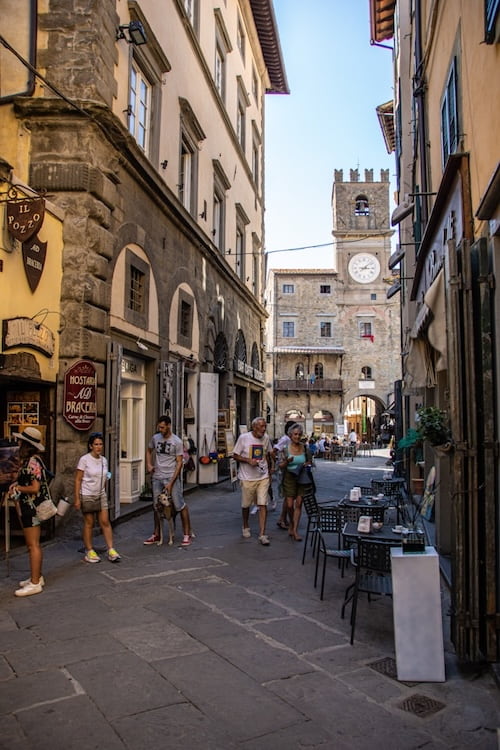 Cortona, Tuscany
Cortona, TuscanyThis ancient Etruscan town, 117 kilometers southeast of Florence, can be reached by train to Camucia-Cortona station, followed by a short bus ride up the hill. The town's steep, narrow streets lead to stunning viewpoints and hidden piazzas where time seems to stand still.
Things to do in Tuscany
The things to do in Tuscany extend far beyond individual towns and cities. The region's countryside offers countless opportunities for wine tasting in the Chianti region, where you can visit family-owned vineyards and learn about traditional winemaking techniques.
The Val d'Orcia, another UNESCO World Heritage site, provides some of Italy's most iconic landscapes, with cypress-lined roads, rolling hills, and picture-perfect farmhouses that have inspired artists for centuries.
Planning your Tuscan adventure requires considering the best times to visit, transportation options, and how to balance must-see attractions with spontaneous discoveries. Spring (April-May) and fall (September-October) offer the most pleasant weather and fewer crowds, while summer brings festivals and long daylight hours, but also higher temperatures and more tourists.
Renting a car provides the most flexibility for exploring smaller towns and countryside, but trains and buses connect major destinations efficiently. Remember that Tuscany rewards those who take time to savor experiences – whether that's lingering over a sunset in a hilltop village, learning to cook traditional dishes from a local chef, or simply enjoying a glass of Chianti while watching the world go by in a medieval piazza.
Your Tuscan journey will create memories that last a lifetime, and you'll understand why this remarkable region continues to captivate travelers from around the world.

